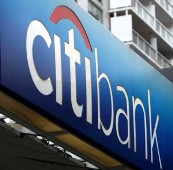 India's current account deficit for financial year 2013 is likely to rise to $87.9 billion or 4.7 per cent of gross domestic product as against $76 billion or 4 per cent of the gross domestic product estimated earlier, Citigroup said in a research note.
India's current account deficit for financial year 2013 is likely to rise to $87.9 billion or 4.7 per cent of gross domestic product as against $76 billion or 4 per cent of the gross domestic product estimated earlier, Citigroup said in a research note.
Citigroup revised CAD estimates for financial year 2013 to 4.7 per cent from 4 per cent of GDP after incorporating the latest trade and GDP data, and said CAD is likely to stay elevated in financial year 2014 as well.
The trade deficit in January widened to $20 billion in January, the second highest rise ever in a month.
The biggest trade gap of $21 billion was recorded in October, 2012. "Going forward for FY14, we expect the CAD to remain elevated at 4.3 per cent of GDP as exports are more sensitive to global demand rather than the rupee, while oil and gold are likely to keep imports high," Citigroup said.
Current account deficit, which occurs when a country's total imports of goods, services and transfers is greater than the country's total export of goods, services and transfers, had touched a record high of 5.4 per cent of GDP in the July-September
"Given India's rising external financing requirements, we expect capital raising to be a key priority in 2013," the report said.
The Reserve Bank of India has also expressed concerns over high CAD and said that a high CAD will threaten macroeconomic stability and impact growth.
"Large fiscal deficits will accentuate the CAD risk, further crowd out private investment and stunt growth impulses," RBI had said in its third quarter monetary policy review.
Over the last few months, the government has taken several steps to boost dollar inflows like de-regulating NRI deposit rates, relaxing ECB norms, increasing FII debt limits, liberalisation of FDI and postponement of GAAR and higher duties on gold.
Meanwhile, high import of gold is adding to the CAD despite efforts by the government to check import of the precious metal. Gold accounts for second largest import in value terms after oil.
Gold imports in the April-December period stood at $38 billion.
In 2011-12 fiscal it was $56.5 billion.






 © 2025
© 2025